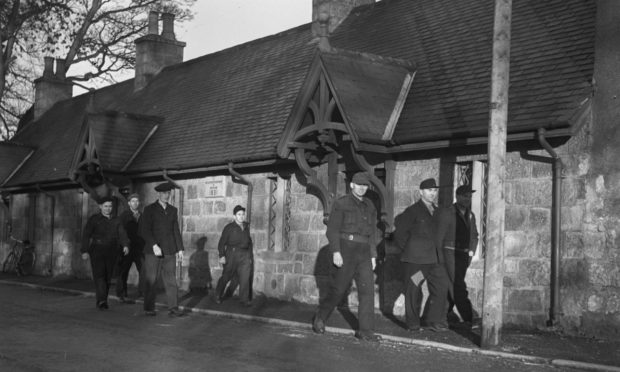Nestled in the idyllic River Don valley, the picturesque village of Monymusk is unlike any other in Aberdeenshire.
With its quaint lattice-windowed cottages, square church tower and green overlooked by the Grant Arms, Monymusk looks more like a typically English village than a Scottish one.
The anglicised Monymusk was the vision of 9th baronet Sir Arthur Grant, who had the village rebuilt in that style in the late 1880s using old stone from an earlier demolished monastery and Tillyfourie Quarry.
The Grant family have been at the heart of Monymusk for centuries, living at the nearby family seat House of Monymusk.
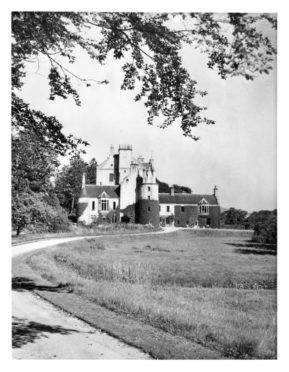
Sitting on the banks of the Don, the house is thought to have been built on the site of the monastery with parts dating back to the 13th century.
The castellated house has been home to the Grant family since 1713, and it was progressive laird Sir Archibald Grant, the 2nd baronet, who first set about improving Monymusk.
He established industries including a distillery and a glassworks, revolutionised farming, and another of his legacies was the planting of 50 million trees on nearby Millstone and Pitfichie hills.
The first larch tree that came to Scotland from Norway was said to have been grown in a pot in the dining room at the house.
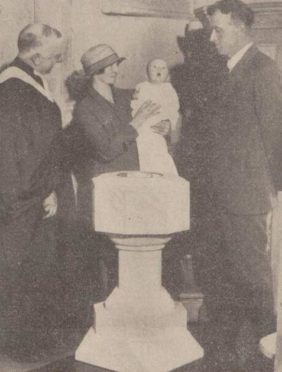
Also at the heart of the village is the ancient church, parts of which date back to the late 12th century.
The place of worship, which marked its 850th anniversary in 2017, is one of the finest examples of Norman architecture in the country featuring a square tower, nave and chancel.
The church we are familiar with today is the result of considerable remodelling in the 19th century.
This photo above from May Day 1933 shows Charles Smith, who was the first baby to be baptised at the new font gifted to the church by his grandfather Henry Alexander.
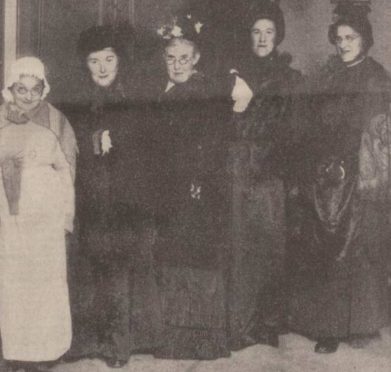
Monymusk WRI was founded in 1928, and this photo above shows the ‘grannies’ of Monymusk in fancy dress for the branch’s sixth birthday celebration.
Presided over by Lady Grant of Monymusk in the early years, the WRI played an active role in the community fundraising for a number of good causes.
The rural continued to buck trends and thrive into the 1980s, celebrating its 70th anniversary with dozens of members in 1988.
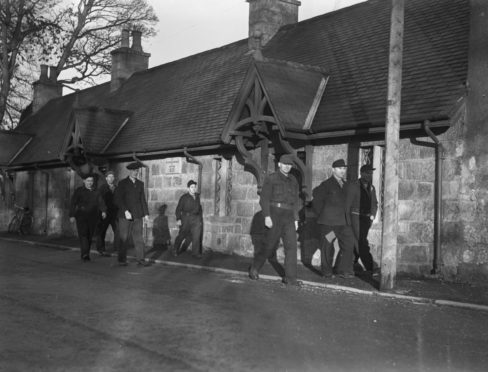
This striking wartime photo shows Prisoners of War walking in front of the distinctive cottages of Monymusk square in 1945.
The POW camp was located where the football pitch and St Ninian’s houses are now, and had the capacity to house 1300 men in huts and tents.
The Italians and Germans lived and worked alongside locals, were taught English by the school’s headmaster, and would put on events for village children.
Reminiscing in 1976, former headmaster Archibald Whiteley said: “They even arranged a Christmas party for the children in the village, making wooden toys and saving three months’ sugar to make cakes.”
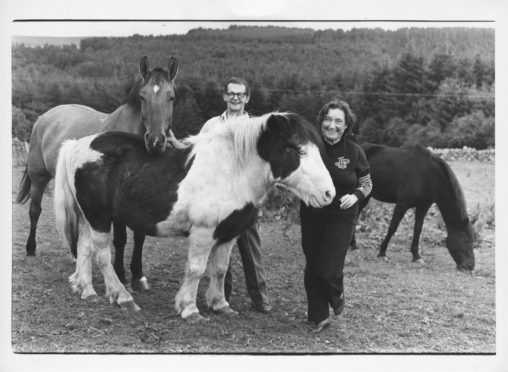
Hitting the headlines in 1984 was Ringo the rescue pony.
Ringo was settling into his new home with Mr and Mrs John Crawford of Leacroft, Moor of Balvack at Monymusk.
He had been saved by former Aberdeen teacher and animal lover Marian Green, who left £600 in her will to Ringo for his upkeep.
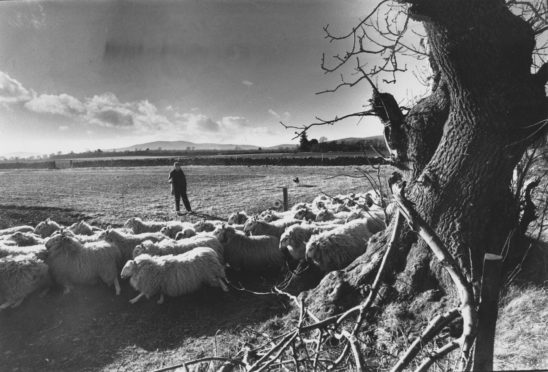
This scene of pastoral perfection in February 1989 shows Monymusk shepherd Ian Wilkie and his dog Gail at work in Blairdaff.
Ian was moving his Greyface gimmers on to pastures new in the early spring sunshine ahead of lambing in April.
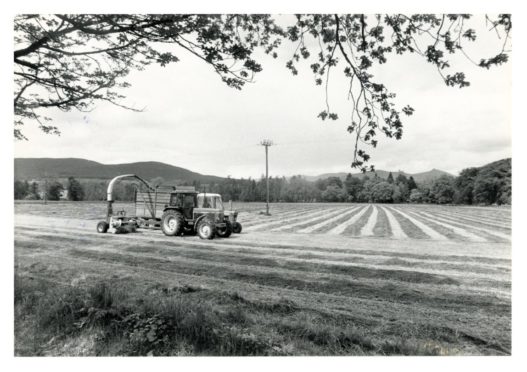
And in a particularly warm spell in June 1989, the fine weather encouraged farmers to start their silage gathering.
In the shadow of Bennachie, the team at Monymusk’s Home Farm got to work on the fields by the river.
Little has changed in this view in the last 30 years and farmers are again taking to the fields for the harvest season.
See more like this:
